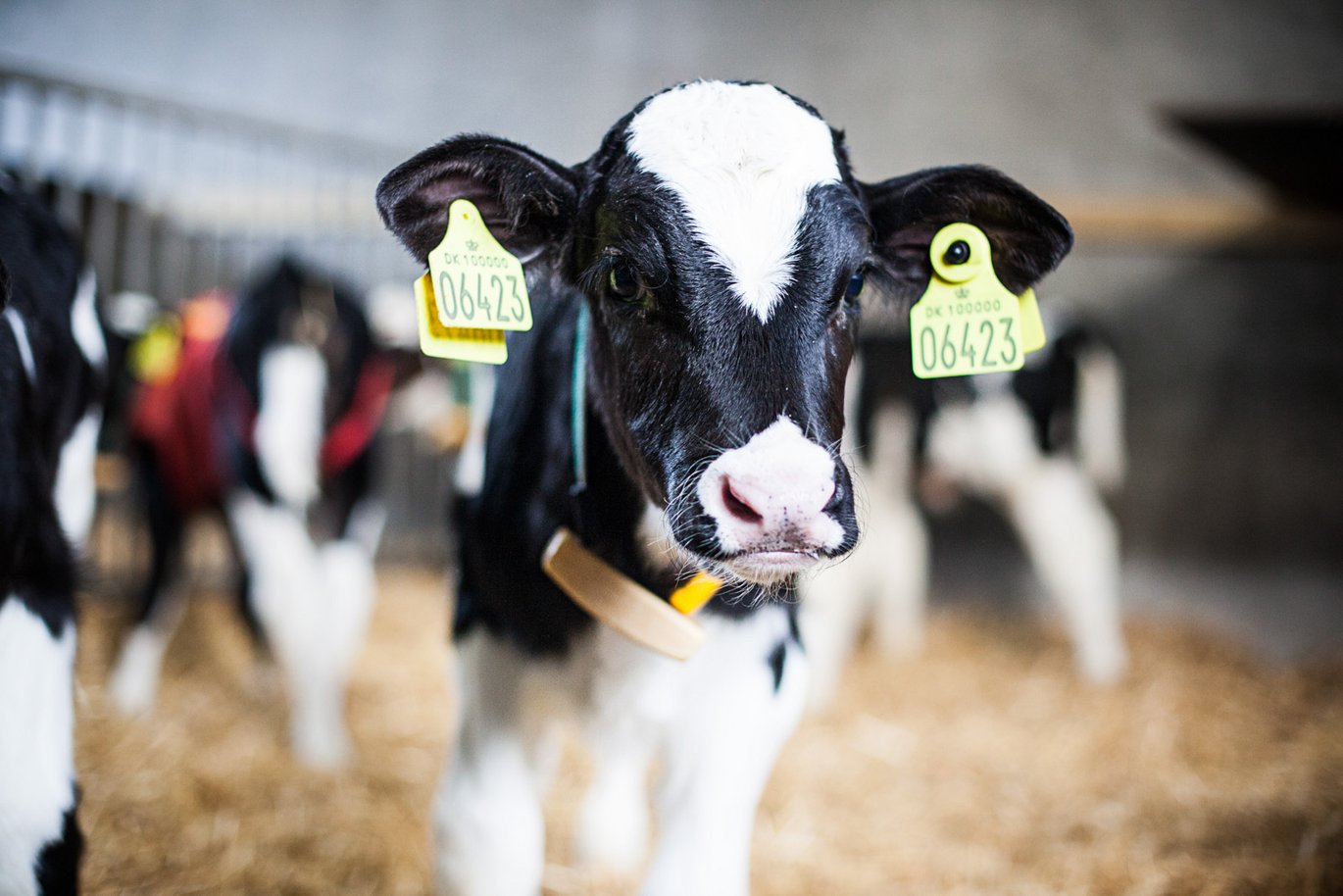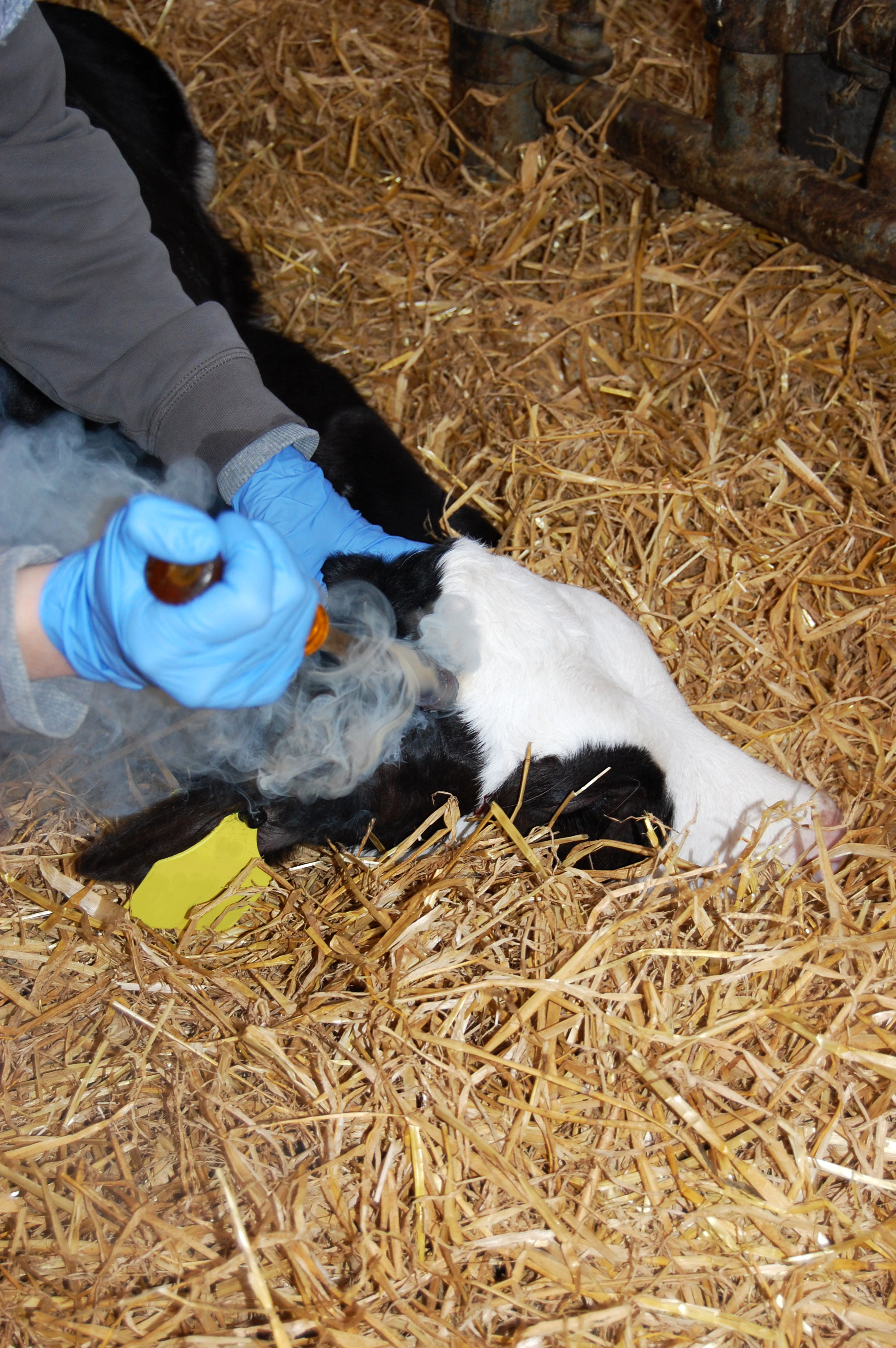Pain relief after disbudding increases animal welfare
There are welfare benefits for calves in connection with disbudding if the animals are given local anesthetic as well as pain relief in the form of NSAID instead of anesthetic on its own.


In Europe, more than 75 percent of commercial dairy farmers dehorn their calves. One of the reasons is to prevent the animals from harming each other and humans.
Farmers around the world use various methods to dehorn their animals. In Denmark, dairy farmers may only dehorn calves that are under three months of age, and the farmers may only use hot-iron disbudding, and only after a veterinarian has given the calf an anesthetic that blocks the pain during the procedure. Many studies have shown that disbudding not only hurts during the procedure but also for hours or days thereafter and therefore has a negative effect on the animal’s welfare.
The question is if additional pain relief can benefit calf welfare when the calves are disbudded using a hot iron. This is a question that the Danish Veterinary and Food Administration asked DCA – Danish Centre for Food and Agriculture, Aarhus University, to elucidate.
Researchers from the Department of Animal Science at Aarhus University have therefore reviewed the literature in the area in order to compare the use of local anesthetic on its own with the use of a combination of local anesthetic and the group of analgesics called NSAIDs (nonsteroidal anti-inflammatory drugs). The latter is a group of drugs that reduces pain, fever and inflammation, and which in humans is used for e.g. headaches or joint pain.
NSAID promotes calf welfare
Based on the literature review, the researchers conclude that there would be a welfare benefit in connection with using a combination of local anesthetic and NSAID instead of local anesthetic on its own, and that this type of treatment would not lead to welfare disadvantages for the animals.
The researchers included a number of indicators based on three different approaches to animal welfare in their assessment of calf welfare following disbudding, namely the animals’ basic health and production, the animals’ possibilities to live a natural life, and the animals’ emotional state, i.e. whether they experience e.g. pain, fear or mutual bonding.
In their report, the researchers conclude that supplementing local anesthetic with NSAID gives better pain relief in the first hours and days after disbudding. Using NSAID in combination with local anesthetic reduces the immediate welfare consequences caused by disbudding.
There is a need for more knowledge about disbudding pain
The researchers point out in their report to the Danish Veterinary and Food Administration that it could be beneficial to investigate precisely which NSAID, and which dosage and type of administration work best in connection with disbudding.
There is also lack of precise knowledge about how long the calves experience pain after disbudding. The burn lesion heals slowly. Studies indicate that the calves experience pain-related changes in sensitivity in the area surrounding the removed hornbuds for several months after disbudding. Experience from humans is that changes in sensitivity induced by burn injuries are difficult to treat.
One of the report’s important messages is therefore that even if NSAID is used optimally, disbudding still remains a problem for calf welfare – no matter which of the three animal welfare approaches is taken. Among arguments for this are the long-term pain-related changes in sensitivity and that it is obviously unnatural to remove body parts from animals to help the animals adapt to given production conditions.
The answer to the Danish Veterinary and Food Administration is described in the report (in Danish) ”Længerevarende smertestillende behandling af kalve i forbindelse med afhorning”. You can read a Danish summary of the report here.
You can also read the scientific article “Welfare Effects of the Use of a Combination of Local Anesthesia and NSAID for Disbudding Analgesia in Dairy Calves – Reviewed Across Different Welfare Concerns”.
For more information please contact:
Senior researcher Mette S. Herskin, Department of Animal Science, email: mettes.herskin@anis.au.dk, telephone: +45 8715 7945, mobile: +45 5050 2969
Postdoc Bodil Højlund Nielsen, Department of Animal Science, email: bodilh.nielsen@anis.au.dk, telephone: +45 3036 5711
